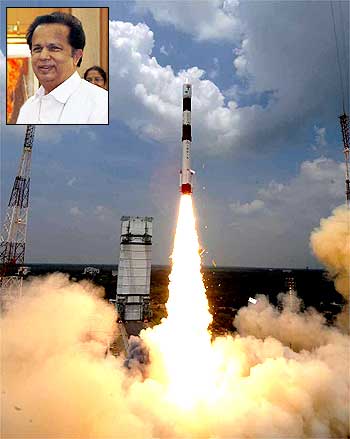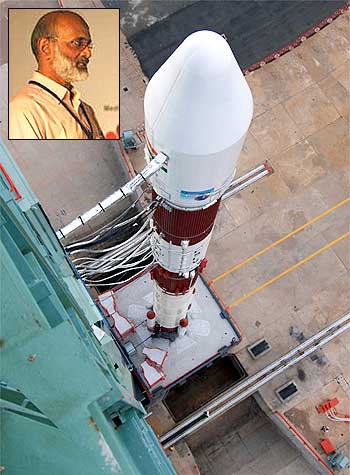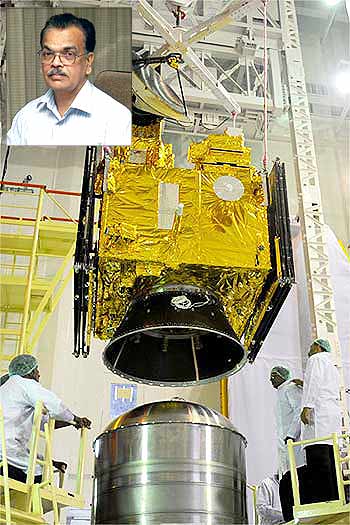The successful launch of seven satellites by the Indian Space Research Organisation on Wednesday has placed India among the best in the field of space research. Behind the success story of the launch is a team that has been silently working for five long years.
Even as the world was still reacting to the abruptly ended, but highly successful, moon mission Chandrayaan-I, scientists at ISRO had begun working on their next mission: the 16th launch of the Polar Satellite Launch Vehicle-C14 that launched into space the Oceansat and six other nano satellites.
Putting this together was no easy task for ISRO. The cost of the project was around Rs 235 crore (Rs 2.35 billion): the rocket alone cost Rs 75 crore (Rs 750 million), while the Oceansat-2 cost Rs 160 crore (Rs 1.6 billion).
A four-member core team, headed by ISRO Chairman G Madhavan Nair, worked on the latest PSLV-C14 project. The core team comprised senior scientists George Koshy, Dr K Radhakrishna and T Alex. Scientists P Kunhikrishnan and Venkat Rao were the vehicle director and project director respectively.
The Mission Director
Image: An ISRO rocket; inset, George KoshyThe 58-year-old scientist, whose passion was basketball before he became a rocket scientist, is an alumnus from the Indian Institute of Technology-Bombay.
Koshy was the project director for the historic Chandrayaan-I mission. The PSLV-C-14 is his fourth major mission.
After joining ISRO in 1972 he has worked in various departments like fabrication, tool design, the SLV project and most importantly the development of the PSLV separation systems -- ISRO's success mantra.
Koshy's first major achievement was ISRO's launch of an Israeli satellite in 2008. He was part of the team that sent up a cluster of 10 satellites in April 2008.
The Landmark Man
Image: The PSLV-C14; inset, Dr K RadhakrishnanPhotographs: ISRO
Dr Radhakrishnan -- who has an engineering degree from Kerala University, an MBA from the Indian Institute of Management-Bangalore, and a doctorate from the Indian Institute of Technology-Kharagpur -- joined ISRO in 1971.
He was the mission director of the Integrated Mission for Sustainable Development and deputy director of the National Remote Sensing Agency, Hyderabad.
Following the success of PSLV-C14, he said next on ISRO's anvil is the launch of the Geosynchronous Satellite Launch Vehicle-D3 with an indigenous cryogenic stage from Sriharikota in December and the PSLV-C15.
The GSLV-D3 launch, he said, will be a landmark in terms of technology. This mission is aimed at placing a communication satellite, the GSAT-4, in orbit.
Mr Operations
Image: The Oceansat-2 being assembled; inset, T K AlexAlex said the success of the launch was a wonderful feeling. "We launched a very major satellite with the help of PSLV-C14."
"The reports and feedback we have been receiving is excellent. Many have asked us if the mission made us feel good after the Chandrayaan episode. However, it is not fair to call the Chandrayaan a failure. It has completed its job, and just because there were few problems on the electronic side, it is not right to call the mission a failure."
Nano tech in space
Image: The Oceansat-2 before it was integrated with the PSLVPhotographs: ISRO
The three payloads, the ocean colour monitor, a scatterometer and a Radio Occultation Sounder for Atmospheric Studies, will also help predict weather.
The PSLV-C14 also launched six nano satellites -- four of which were CubeSats weighing one kg each. These nano satellites will help test new spacecraft technology.






article